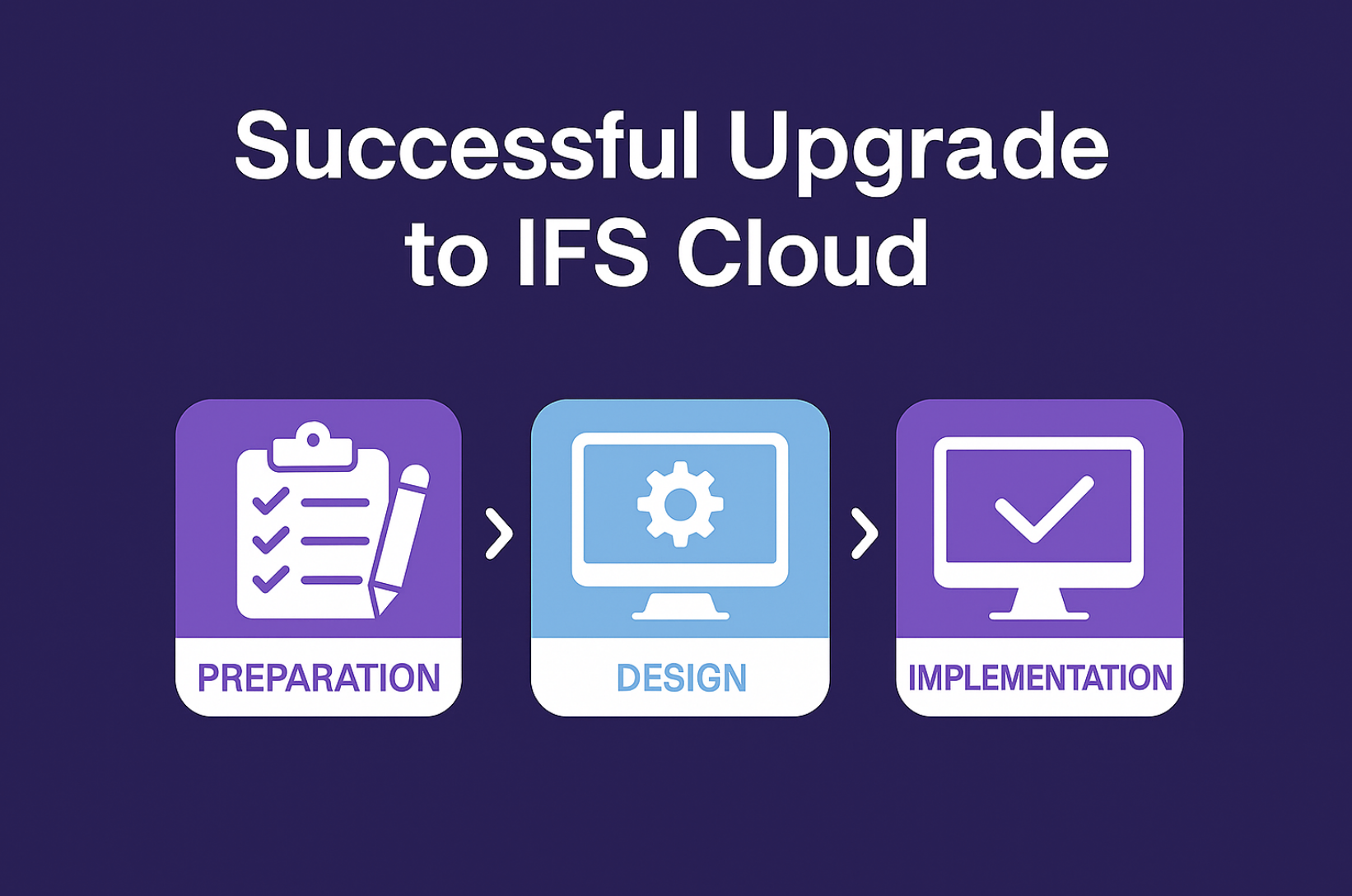
Transitioning to IFS Cloud is a strategic move that can unlock significant business benefits, including evergreen updates, enhanced functionality, and improved user experience. However, a successful implementation requires careful planning and execution across three critical phases: Preparation, Design, and Implementation.
In this article, we’ll break down each phase to help your organization navigate the transition smoothly and maximize the value of IFS Cloud.
Phase 1: Preparation – Setting the Foundation
The Preparation Phase covers the period between deciding to upgrade to IFS Cloud and the actual start of the project. This phase is crucial for minimizing disruptions and ensuring a smooth transition.
Key Activities in the Preparation Phase:
- Avoid Non-Portable Customizations: Identify and halt any new customizations that won’t migrate to IFS Cloud. The most problematic customizations are those involving backend database changes, such as:
- PL/SQL calls in custom objects
- Custom packages deployed directly in the database
- Mitigate Existing Customizations: Review and modify current customizations to align with IFS Cloud’s architecture.
- Assess Technical Debt: Evaluate whether existing modifications are still necessary or if standard IFS Cloud functionality can replace them.
By proactively addressing these issues, you’ll reduce migration challenges and ensure a cleaner transition.
Phase 2: Design – Choosing the Right Approach
The Design Phase is where you define your implementation strategy. One of the most critical decisions at this stage is whether to perform an upgrade or a re-implementation.
Upgrade vs. Re-Implementation: Which is Right for You?
- Upgrade: Best if you want to retain most of your existing configurations and data structure.
- Re-Implementation: Often the better choice if you want to simplify and return to more “vanilla” IFS functionality. This approach allows you to:
- Eliminate outdated customizations
- Fully leverage IFS Cloud’s evergreen updates
- Optimize business processes
Why Re-Implementation is Often Recommended:
IFS Cloud introduces new capabilities and a modernized user experience. By reducing reliance on legacy customizations, you position your business to take full advantage of continuous innovation.
Phase 3: Implementation – Ensuring User Adoption & Success
The Implementation Phase is where planning turns into action. A common pitfall is assuming that users familiar with older IFS versions (like Apps 10) will seamlessly adapt to IFS Cloud.
Critical Success Factors for Implementation:
- Comprehensive User Training: IFS Cloud has a different user interface and workflow—don’t underestimate the learning curve.
- Change Management: Communicate the benefits of the new system to build excitement and reduce resistance.
- Ongoing Support: Provide resources (FAQs, training sessions, super-users) to help employees transition smoothly.
Why This Matters:
User frustration early on can lead to poor adoption later. Investing in training and change management ensures a smoother transition and maximizes ROI.
Conclusion: A Structured Approach for a Seamless Transition
Moving to IFS Cloud is a transformative journey that requires careful planning across three phases:
- Preparation – Eliminate non-portable customizations.
- Design – Choose between upgrade and re-implementation.
- Implementation – Focus on training and change management.
By following this structured approach, your organization can minimize disruptions, optimize processes, and fully capitalize on the power of IFS Cloud.
Ready to start your IFS Cloud journey? Contact JumpModel for expert guidance and implementation support!